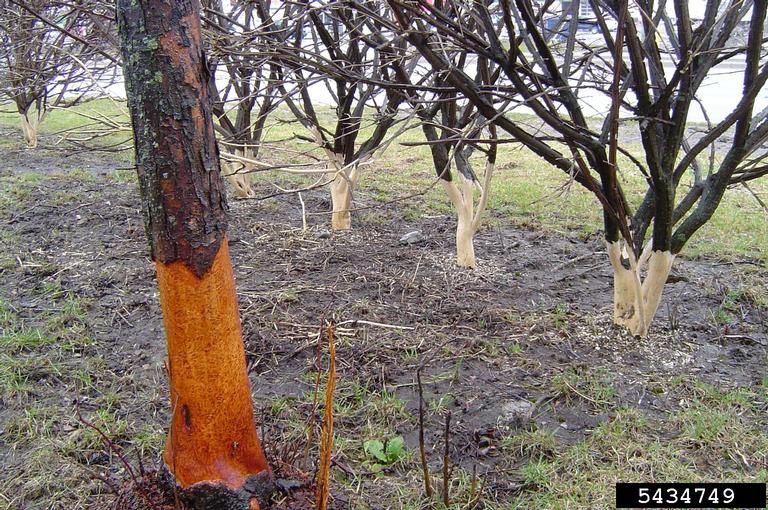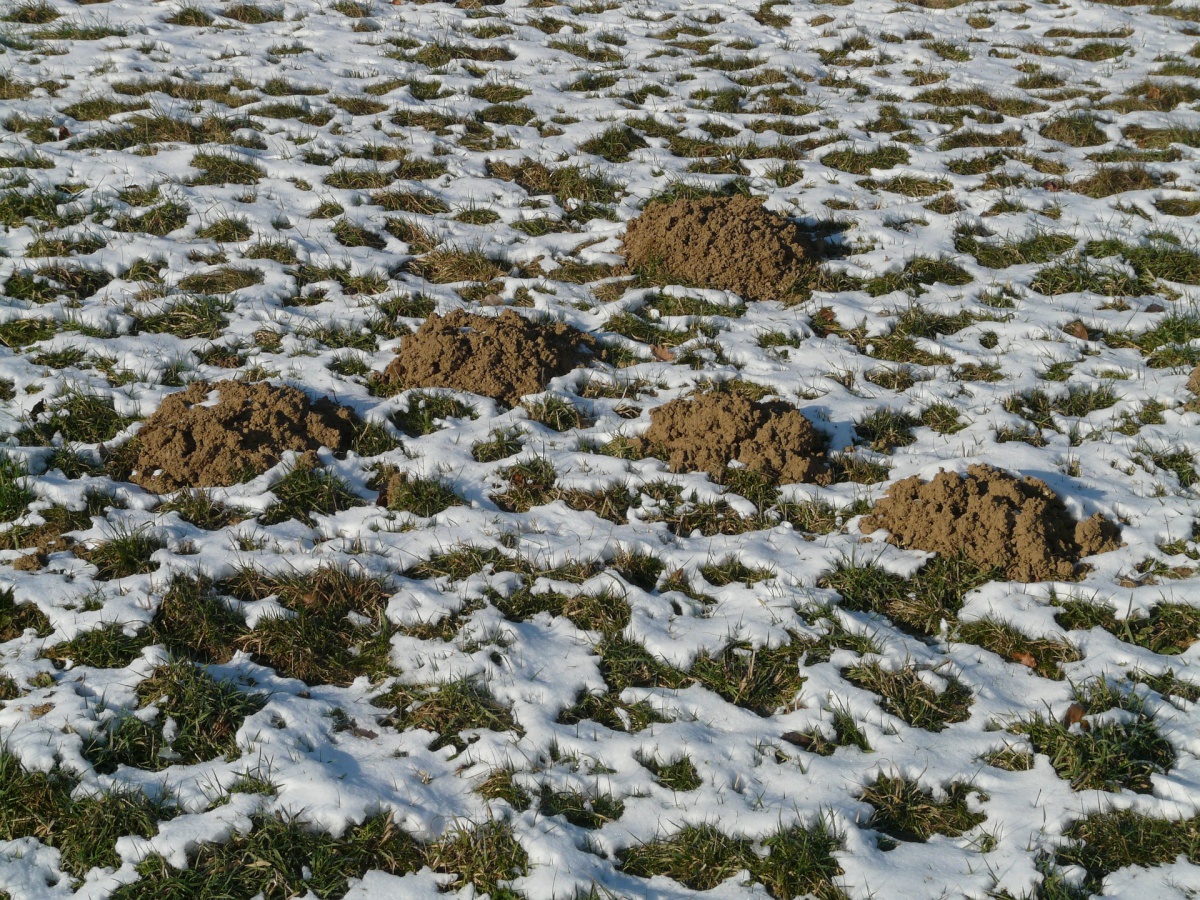Introduction
When the snow finally melts in spring, many of us will discover mounds or ridges of soil in our lawns and damage to at least a few of our plants. What causes these problems? And more importantly, what can be done to prevent damage in the future? The culprits of winter damage are generally pine voles, meadow voles, and moles.
Pine Voles

Education Center, Bugwood.org
Damage
Do plants in your perennial garden sometimes fail to come up in spring? Have you had entire tulip plantings just disappear? Have you ever noticed a young tree leaning to one side and discovered it had no roots to speak of? These types of damage are generally caused by pine voles.
Pine voles live in a series of connecting underground tunnels that are usually less than a foot deep. Entrance holes are 1 to 2 inches in diameter and are often found in orchard areas, plant beds, and near trees and shrubs. Why is this?
Voles prefer to dig their tunnels in nice, light, loamy soils. If you have a hard clay soil, a wet soil, or a very sandy soil, you won’t find many pine voles. But provide a nice loamy soil with lots of organic matter and it’s as though you posted a “voles wanted” sign. They will move right in to feast on bulbs, tubers, seeds, and bark (root bark included). Unfortunately, these voracious eaters are active year-round.
Control
Trapping is probably the most viable solution for homeowners. It is most successful in autumn (late-October and November), but can also be effective in spring after the snow has melted. First, excavate perpendicular to the tunnel where you want to trap. Then clear all debris from the tunnel and position the bait trigger on your mouse trap so that a vole coming down the tunnel will trigger it. Pre-baiting the tunnel for 24 hours in advance of trapping can be helpful. This can be accomplished by putting apple pieces into vole holes and tunnels. After baiting mouse traps with apples or peanut butter, cover them with old shingles or boards to exclude sunlight. Be sure to leave enough head room for the trap to spring shut. The key to success is to trap voles consecutively for at least four days.
Meadow Voles

Damage
In contrast, meadow voles generally live above ground, creating little round tunnels in grassy vegetation. Often, these runways are easy to spot in spring after the snow has melted. During winter, meadow voles feed on the bark of young trees at or near the ground surface. In years of heavy snow cover, the damage may occur higher on the trunk. Meadow voles also scurry back and forth in their under-the-snow tunnels gathering fallen seeds from bird feeders. During the growing season, their primary food is grass.

Control
Meadow voles require vegetation or other cover to survive. Damage by meadow voles can be significantly reduced by mowing. If meadow voles are a problem in planting beds, reduce mulch to a thin layer and pull it away from the base of trees and shrubs. Certain mulches attract voles; try to avoid using mulches with fine or small particle sizes.
To avoid damage to young orchard or landscape trees, place hardware cloth cylinders (1/4” mesh) around the trunks. Cylinders should be large enough to allow for 5 years of growth and will need to be dug several inches into the ground. Another option is the use of plastic tree guards. These can be applied in late-November and taken off mid-April. Leaving them on year round traps moisture, leading to an environment ripe for disease or insect problems.
Moles

Damage
Moles are neither plant eaters nor rodents. A close relative of the shrew, moles feed largely on insects and earthworms. In fact, moles feed on many pestiferous beetle larvae such as the white grubs found in lawns. They also feed on earthworms, spiders, and centipedes. What most people find objectionable are the mole hills and tunnels pushed up into their lawns. The ridges, or feeding runways, may only be used once. Mole hills, on the other hand, are created when excavated soil is pushed to the surface and resemble miniature volcanoes.
Control
The simplest solution to mole tunnels is to simply stamp them down or rake them apart. For the most part, damage is limited to the dried plant roots lifted up by the tunnel. If tunnels and hills keep reappearing, you may have to take stronger measures. Grub controls (applied in late June or July) will reduce the number of beetle larvae in the soil. Buried fencing or barriers can be used to protect small areas. Harpoon traps placed in active tunnels can kill the moles themselves. Moles, like voles, like nice friable soils. It is unlikely that they will move into dry, compacted, or stony soils.
Fact sheet written by Margaret Hagen, Agriculture Resources Educator Emeritus, UNH Cooperative Extension. Updated August 2016.
